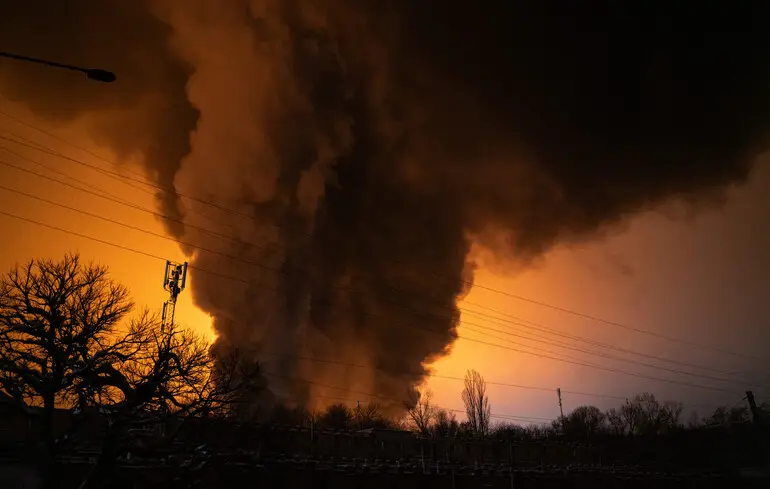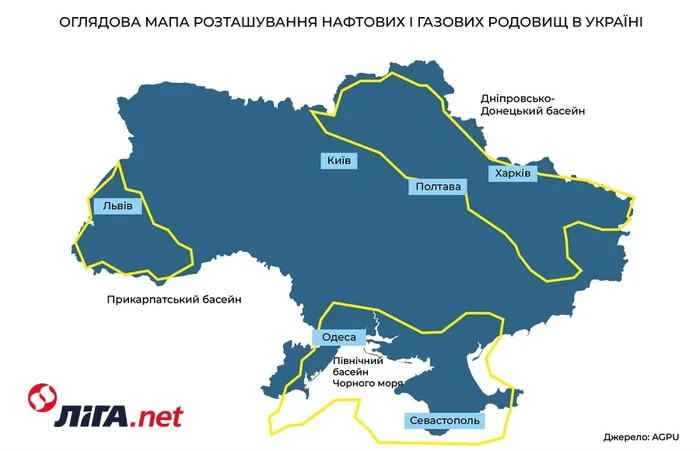Enemy Hits Gas Production. Is Ukraine At Risk Of Being Left Without Its Own Gas?

In recent weeks, enemy attacks on Ukraine’s gas production facilities have intensified significantly. The extent of the damage is not officially reported, but judging by indirect signs, such as a sharp increase in the purchase of imported gas by the Naftogaz national oil and gas company, we can conclude that the damage is significant. According to Reuters, Ukraine has been importing about 16 million cubic meters of gas daily in recent days, which roughly corresponds to 30% of Ukraine’s own gas production.
According to the Association of Gas Producers, last year Ukraine’s total gas output amounted to 19.12 billion cubic meters of gas, or about 52 million cubic meters per day. The main gas production regions are the eastern oblasts of Ukraine, where 85% of Ukrainian gas is produced. The rest is in western Ukraine. The proximity of the frontline to the Kharkiv and Poltava regions creates great risks for our gas production, as the time of approach of UAVs and missiles of the enemy is extremely low.
The intensification of the strikes could be both a reaction to the recent successful attacks of the Ukrainian Defense Forces on Russian refineries and oil terminals (Ust-Luga) and a general desire of the enemy to strengthen its negotiating position before possible ceasefire talks.
These attacks were hardly unexpected; rather, it was more surprising that Russia had previously been less active in hitting gas production facilities. This can be explained by the fact that earlier Moscow simply had higher priority targets — Ukrainian power generation and Ukrenergo networks. Besides, hitting production capabilities in the summer would not have made much sense, as it would not have significantly affected gas supplies to consumers. It is safe to say that the timing of the strikes was carefully calibrated and planned well in advance. The attacks were carried out on the eve of a significant cold snap and when UGS (underground gas storage) reserves declined, which will make it difficult to compensate for the loss of some gas production by withdrawing additional gas from UGS objects. It is not easy to assess how difficult the situation is, but Naftogaz’s actions on additional gas imports show that the authorities are taking the necessary steps to reduce risks and minimize negative consequences from enemy attacks.
Therefore, it is worth asking more about how companies and authorities prepared for possible attacks on key gas output area? In the early years of the war, the energy sector took the brunt of the enemy's attacks, and this gave gas producers additional time to prepare for possible attacks. Were we able to take advantage of this?
This preparation for possible attacks can be divided into four main blocks:
- Physical defense of the key gas output areas. There is nothing new here, so we simply had to study the best practices of energy companies in protecting their facilities and, if possible, implement them at certain oil and gas facilities. The state-owned Ukrasvydobuvannya and Ukrnafta, as well as private production companies, had the money and the necessary human resource. Naftogaz alone purchased more than UAH 20 billion worth of gas from private production companies.
- Air and missile defense of the Armed Forces of Ukraine. Unfortunately, Ukraine is still severely limited in air/missile defense assets, so it is simply impossible to cover all objects with these means, but key ones had to be covered. Mobile fire groups have also proved effective against enemy UAVs.
- Preparations to minimize damage. For prompt restoration, it was necessary to create emergency stocks of necessary equipment in warehouses, as Ukrenergo did. As for the main gas supply points, alternative routes and connections had to be provided and possibly built.
- Preparation of alternative gas sources. Own gas production is a critical source. It fully meets the country’s needs during the summer months and about 50% during the winter period (the rest is provided by gas from UGS facilities and imports). Therefore, preparations for possible disruptions in gas production should have included the creation of additional gas reserves in UGS facilities and the expansion of gas import capacity, similar to the energy sector, when the loss of thermal generation was partially compensated by imports and emergency aid from neighboring European countries.
Of course, the information mentioned above is classified, and we will never know what was actually implemented. But one thing is certain: the necessary gas reserves were not created in UGS facilities in case of such incidents.
According to GIE Aggregated Gas Storage Inventory, Ukrainian UGS facilities are now filled at less than 10% (see Figure), which is a historical minimum. At the end of the last heating season, there was more gas in UGS facilities than now, with a month and a half of the heating season still lying ahead.
If additional volumes of gas had been pumped into UGS reserves in the summer, their withdrawal from there could easily cover even the loss of 50 percent of own gas production temporarily (26 million cubic meters per day). However, now the possibility of additional gas withdrawal from UGS is more limited, and this requires more imports. Imports will obviously cost considerably more, as imported gas prices are now almost twice as high as they were in the summer, when Naftogaz could import gas.
Unfortunately, it is safe to assume that the enemy will continue to attack our energy and gas production in order to gain a more favorable negotiating position. Therefore, the critical task is to build defenses and to create the necessary gas reserves in UGS facilities for the next winter. In addition, it is crucial to increase the country’s own gas output, especially in the west of the country. In this situation, the actions of Ukrainian security forces to block gas production by UNB and Smart Energy, which could produce millions of cubic meters of gas, look extremely illogical. In November 2024, the State Service of Geology and Mineral Resources of Ukraine (Derzhheonadra) again suspended the special permits for Smart Energy, which is why the company was forced to stop gas production. As a result, hundreds of thousands of cubic meters of Ukrainian gas are not supplied to the gas networks on a daily basis.
Read this article in Ukrainian and russian.
Please select it with the mouse and press Ctrl+Enter or Submit a bug














 Login with Google
Login with Google